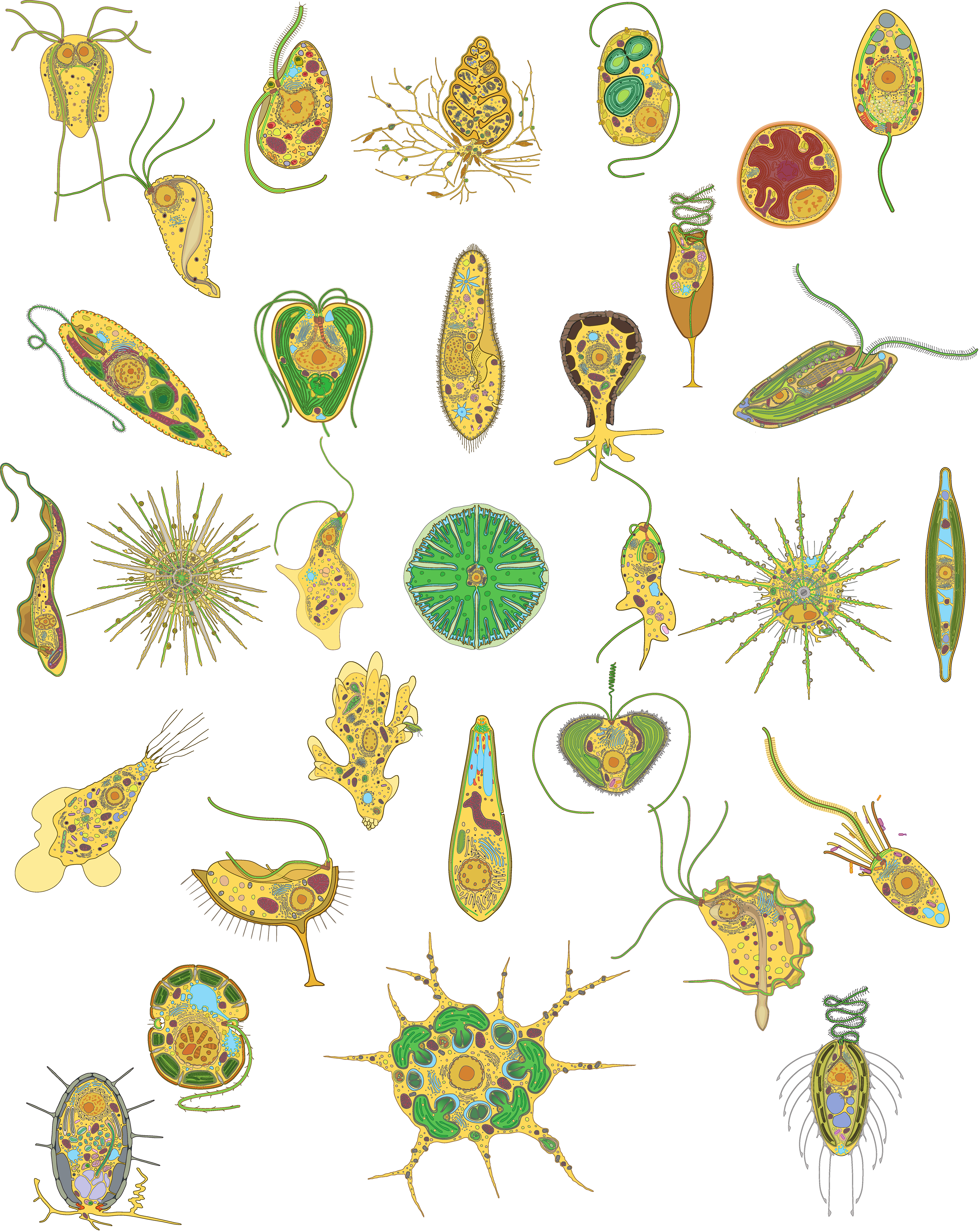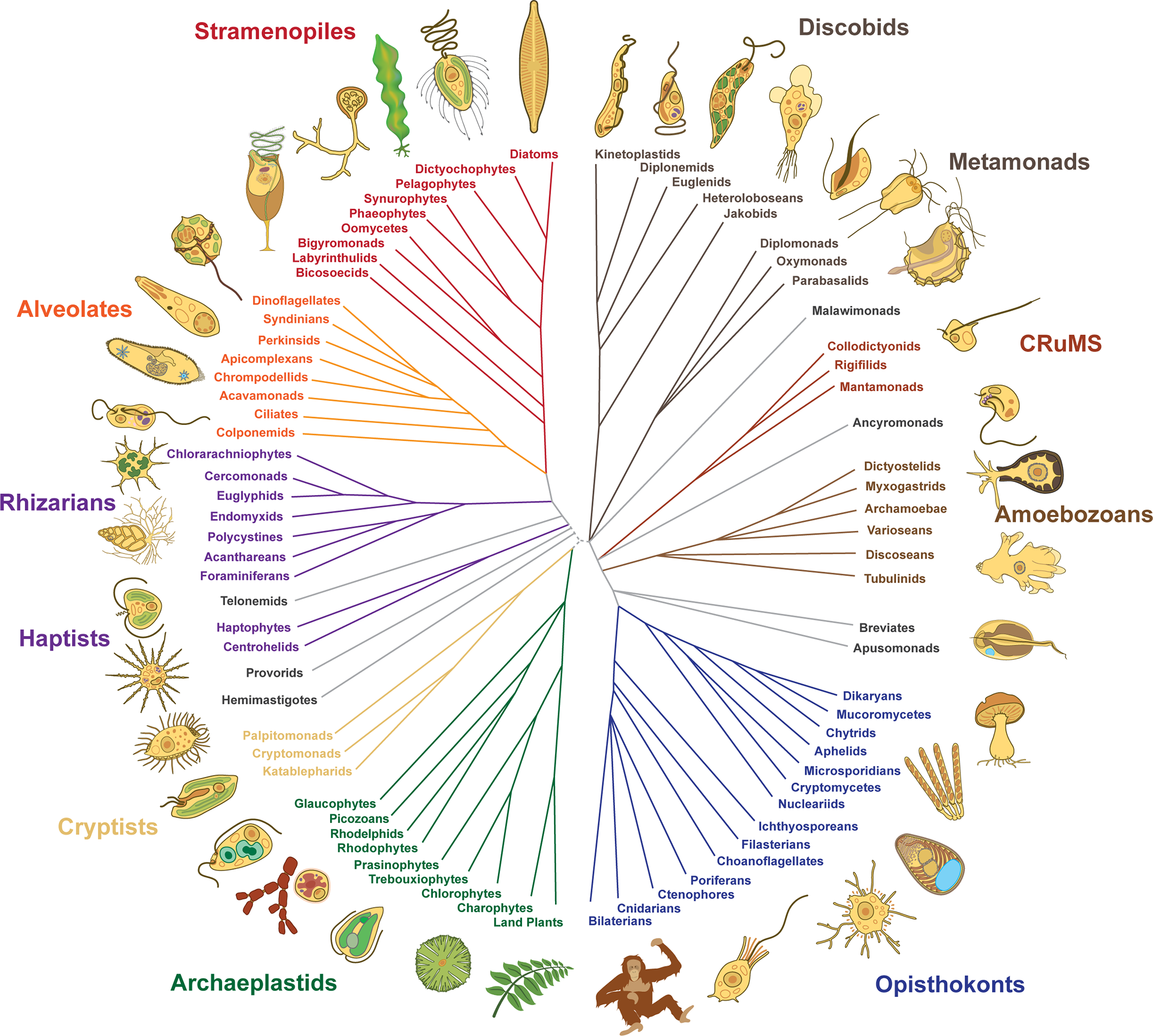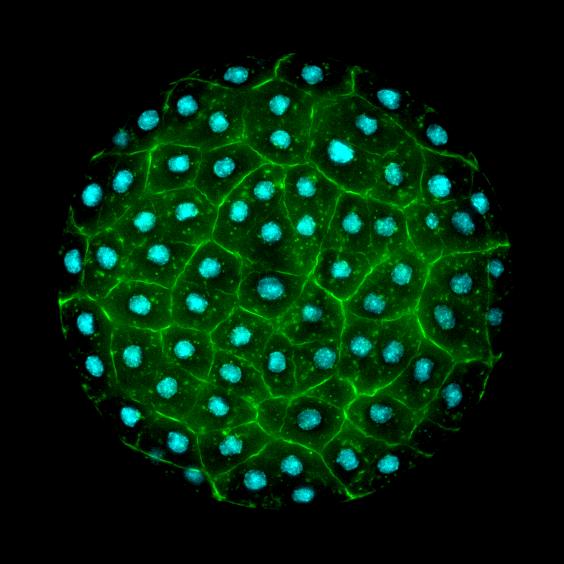The Wonderful Microscopic Web That Sustains Life in the Oceans and Explains the Origin of Animals
The Wonderful Microscopic Web That Sustains Life in the Oceans and Explains the Origin of Animals

This year, the theme for World Oceans Day (June 8th) was “Ocean wonders: sustaining what sustains us” (as stated on the official website). With it, the organizers aimed to highlight the sense of wonder as the driving force that leads us to explore the ocean and should also motivate us to protect it more. In fact, much remains to be discovered in the sea, especially at the microscopic level, where a fascinating and little-known network of organisms operates to sustain ecosystems.
“In the face of increasingly overwhelming challenges, the act of wondering reminds us that we are part of something bigger,” they add. That “something” is an immense web of life, two-thirds of which is made up of single-celled microorganisms. Among them are some particularly abundant and equally unknown organisms with which multicellular beings—fungi, plants, and animals—share a common ancestor: protists. These make up nearly a third of marine biomass.
Unlike bacteria, protists enclose their genetic material within a nucleus. While most are unicellular, there are also large algae—such as kelp or Laminaria—that form underwater forests rich in biodiversity. Alongside parasites that cause malaria (Plasmodium) or Chagas disease (Trypanosoma), these are the most well-known protists. However, it is estimated that over 100,000 species may exist just on the surface of the ocean—many of them unknown and with lineages yet to be placed in the tree of life.
At the Institute of Evolutionary Biology (IBE), a joint research center of the Spanish National Research Council (CSIC) and Pompeu Fabra University (UPF), several groups have secured some of the most substantial research grants in recent years—from the European Research Council (ERC) and the Spanish State Research Agency (AEI)—to track protists in oceans and lakes. Thanks to this support, they are making the invisible visible, uncovering who these elusive and multifaceted microorganisms are and how they live.
Decoding the “Dark Matter” of the seas
Although ocean microorganisms are thought to outnumber the stars in the universe, space missions tend to attract more attention than expeditions that study underwater microbes. Yet due to their abundance, they likely underpin marine food webs, at the base of which are the best-known photosynthetic protists: diatom algae. Much less studied, however, are other abundant protists in the ocean—precisely the focus of Daniel Richter’s lab at IBE (CSIC-UPF).

Tree of eukaryotes showing major subgroups. / doi: https://doi.org/10.1371/journal.pbio.3002395.g001
“Imagine the typical image of a food chain where one fish eats another, which eats another, and so on, down to the smallest organisms. There, we're missing a link that we suspect is important for these chains—corresponding to the size range of protists, between animals about a millimeter in size and bacteria about a micrometer,” says Richter. “We know they exist and that they are that size because, in previous campaigns, we sequenced their DNA after capturing them with filters matched to their estimated size.”
The study of protists is not so different from that of cosmic dark matter—which is out there, unseen, but so massive that it influences the rest of the universe’s matter. “We don’t know exactly what they look like or what they do, but given their size and abundance, they must play a major role,” explains Richter. Now, for the first time, his team is managing to culture many species. “New sequencing technologies have allowed us to learn about their evolution, and thanks to that, we now receive funding to study their behavior,” he adds.
The “Magnificent 8” or the “Pokédex” of our unicellular relatives
While fiction has imagined marvelous beings, the real world held organisms no less extraordinary—such as the “Magnificent Eight” being sought by the lab of Iñaki Ruiz-Trillo and Elena Casacuberta at IBE (CSIC-UPF). These are eight living protist lineages with which animals share a common unicellular ancestor. “We know that, beyond the four previously known ones, there are eight more thanks to the DNA we’ve extracted from water samples,” says Ruiz-Trillo. So far, they know the appearance of only one.

Sphaeroforma arctica (Ichthyosporea) stained with phalloidin and DAPI. Image taken with a 40X objectif. Credit to Multicellgenome Lab.
Their work evokes the slogan of the popular Pokémon video game, “Gotta catch 'em all.” And the comparison doesn’t end there. Their task—placing these unknown entities in the tree of life—is akin to filling in the blank entries of a Pokédex, the in-game device that tracks the Pokémon you’ve yet to discover or catch.
“I think, as the saying goes, reality surpasses fiction, because these lineages are the result of a long evolutionary process in which new morphologies and developmental mechanisms have emerged—things you won’t find in any video game,” says Casacuberta. “Imagine—we’re discovering the capabilities that the common ancestor of animals and protists might have had, and how its various forms evolved and interacted over time.”
In the same lab, Marta Álvarez studies how genes shared by animals and protists are expressed. As she explains: “Both share many genes from their common ancestor, which can be turned on, off, or combined in different ways to adapt in different ways. Animals found a more advantageous strategy than being unicellular, while protists, with just one cell, learned to eat, produce energy, and even move.”
The Microbiome of Mediterranean Corals in the Face of Climate Crisis
“If protists are the ocean’s dark matter, those from the microbiome of other marine organisms are the hyperdark matter.” That’s how Javier del Campo describes the lack of attention received by most protists in coral microbiota. That’s why, in his IBE (CSIC-UPF) lab, he studies those that live in symbiosis with Mediterranean corals. “Many people don’t even know that there are corals in this sea, yet they provide services to society—from recreational diving to sustaining vital ecosystems,” del Campo emphasizes.
To help protect the natural richness around him, the researcher works to decipher the community of protists that, to varying degrees, depend on corals—and vice versa. “The main symbiont of these corals is a unicellular protist microalga. These zooxanthellae are the ones truly affected by climate change, as they abandon the host when the temperature rises—and without them, the coral eventually dies,” he explains.
Still, coral microbiota includes many other protists, some well-known, some not, with varying levels of dependence on their host. “Even though zooxanthellae are endosymbionts of corals, they also live freely in the water, which allows us to experiment with them in the lab. Our big challenge is to culture the strict endosymbionts, which need coral cells to survive,” says del Campo.
The health of the oceans depends to a large extent on these microorganisms. Studying protists therefore means contributing to the care of the seas—while giving us yet more reasons to marvel at what they contain. In the words of Virginia Edgcomb, marine ecologist at the Woods Hole Oceanographic Institution (Massachusetts, USA): “Protists constantly surprise us with their cellular complexity, their diverse abilities, and their fascinating interactions with other organisms—but we still have much to learn about their diversity, especially in the ocean’s depths.”
This content was produced by Ana Lozano as part of the CSIC – BBVA Foundation Science Communication Grants Program, 2023 Call.
